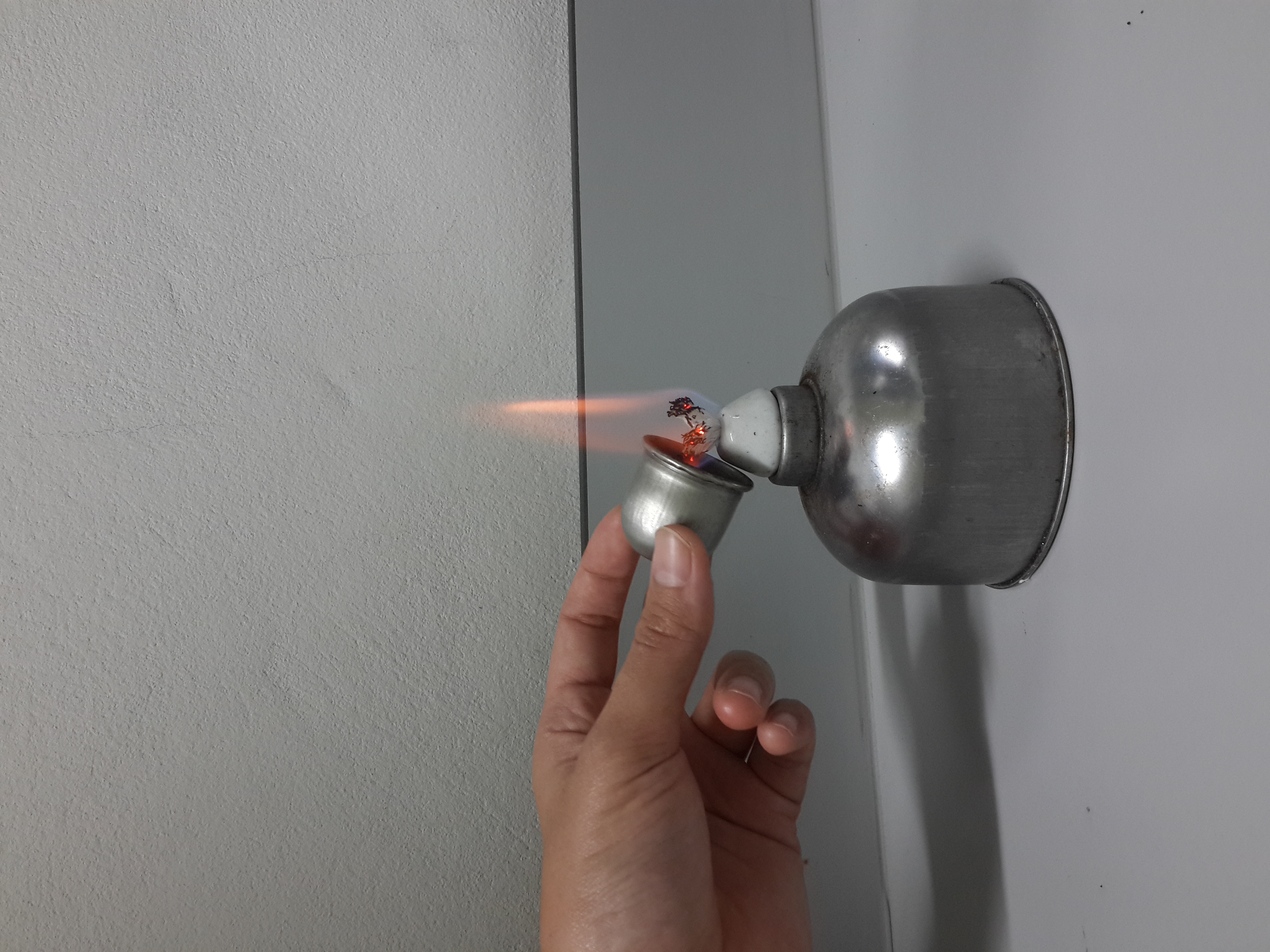Spirit Lamp on:
[Wikipedia]
[Google]
[Amazon]
An alcohol burner or spirit lamp is a piece of

 Typical fuel is denatured alcohol, methanol, or
Typical fuel is denatured alcohol, methanol, or
laboratory equipment
A laboratory (; ; colloquially lab) is a facility that provides controlled conditions in which scientific or technological research, experiments, and measurement may be performed. Laboratory services are provided in a variety of settings: physic ...
used to produce an open flame
A flame (from Latin '' flamma'') is the visible, gaseous part of a fire. It is caused by a highly exothermic chemical reaction taking place in a thin zone. When flames are hot enough to have ionized gaseous components of sufficient density the ...
. It can be made from brass
Brass is an alloy of copper (Cu) and zinc (Zn), in proportions which can be varied to achieve different mechanical, electrical, and chemical properties. It is a substitutional alloy: atoms of the two constituents may replace each other wit ...
, glass
Glass is a non-Crystallinity, crystalline, often transparency and translucency, transparent, amorphous solid that has widespread practical, technological, and decorative use in, for example, window panes, tableware, and optics. Glass is most ...
, stainless steel or aluminium
Aluminium (aluminum in AmE, American and CanE, Canadian English) is a chemical element with the Symbol (chemistry), symbol Al and atomic number 13. Aluminium has a density lower than those of other common metals, at approximately o ...
.
Uses
Alcohol burners are preferred for some uses over Bunsen burners for safety purposes, and in laboratories wherenatural gas
Natural gas (also called fossil gas or simply gas) is a naturally occurring mixture of gaseous hydrocarbons consisting primarily of methane in addition to various smaller amounts of other higher alkanes. Low levels of trace gases like carbon ...
is not available. Their flame is limited to approximately 5 centimeters
330px, Different lengths as in respect to the Electromagnetic spectrum, measured by the Metre and its deriveds scales. The Microwave are in-between 1 meter to 1 millimeter.
A centimetre (international spelling) or centimeter (American spellin ...
(two inches
Measuring tape with inches
The inch (symbol: in or ″) is a unit of length in the British imperial and the United States customary systems of measurement. It is equal to yard or of a foot. Derived from the Roman uncia ("twelft ...
) in height, with a comparatively lower temperature than the gas flame of the Bunsen burner.
While they do not produce flames as hot as other types of burners, they are sufficiently hot for performing some chemistries, standard microbiology
Microbiology () is the scientific study of microorganisms, those being unicellular (single cell), multicellular (cell colony), or acellular (lacking cells). Microbiology encompasses numerous sub-disciplines including virology, bacteriology, ...
laboratory procedures, and can be used for flame sterilization of other laboratory equipment.
Operation

 Typical fuel is denatured alcohol, methanol, or
Typical fuel is denatured alcohol, methanol, or isopropanol
Isopropyl alcohol (IUPAC name propan-2-ol and also called isopropanol or 2-propanol) is a colorless, flammable organic compound with a pungent alcoholic odor. As an isopropyl group linked to a hydroxyl group (chemical formula ) it is the simp ...
. A cap is used as a snuffer for extinguishing the flame.
See also
* Bunsen burner * Heating mantle * Beverage-can stove * Portable stoveReferences
External links
* Burners Laboratory equipment {{tool-stub